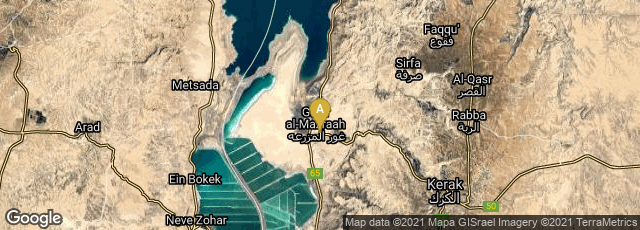

Interpretive reconstruction of prehistoric granary. "The exposed area illustrates the upright stones supporting larger beams, with smaller wood and reeds above, and finally covered by a thick coating of mud. The suspended floor sloped at 7° and served to protect stored foods from high levels of moisture and rodents (Illustration by E. Carlson)."
In July 2009 archaeologists Ian Kuijt and Bill Finlayson reported that recent excavations at the PPNA (Pre-Pottery Neolithic A) site at Dhra′ near the Dead Sea in Jordan provided strong evidence for sophisticated, purpose-built granaries in a predomestication context 9300-9175 BCE. This evidence supported arguments for the storage and cultivation of wild cereals before the domestication of plants.
"Designed with suspended floors for air circulation and protection from rodents, they are located between residential structures that contain plant-processing instillations. The granaries represent a critical evolutionary shift in the relationship between people and plant foods, which precedes the emergence of domestication and large-scale sedentary communities by at least 1,000 years....
"People in the PPNA were the first in the world to develop systematic large-scale food storage. In the Early Natufian period (≈15,000/14,500–12,800 cal B.P.), people used a remarkably wide range of wild plants and animals, lived in relatively large well-made semisubterranean buildings for much of the year, and undoubtedly had a detailed knowledge of the seasonality and availability of these resources. Certainly the apparent increased degree of sedentism in the Early Natufian period suggests that people were able to reduce seasonal food risks to the point where they could live in the same areas for 1 or more seasons of the year. There is, however, surprisingly little direct evidence for food storage. The strongest is from ′Ain Mallaha, where pits are often termed silos although their specific function is unclear. There is indirect evidence in the Natufian for plant food processing, including the presence of sickles, mortars, and pestles. Although Natufian people probably engaged in some form of low-level food storage, they also situated their settlements where they were able to use high-yield food resources from multiple natural ecotones in different seasons. With the onset of the climatic downturn of the Younger Dryas, people in the Late Natufian period (≈12,800–11,500 cal B.P.) returned to more mobile economic and subsistence strategies. Late Natufian people abandoned earlier settlements, adopted new systems seasonal residential movement, and rarely built residential structures that required significant investment of energy" (Kuijt & Finlayson,"Evidence for food storage and predomestication granaries 11,000 years ago in the Jordan Valley," Proceedings National Academy of Sciences," Published online before print June 22, 2009, doi:10.1073/pnas.0812764106).